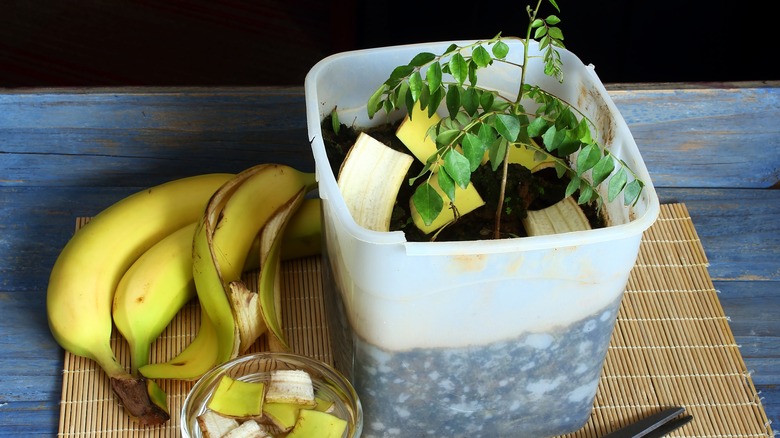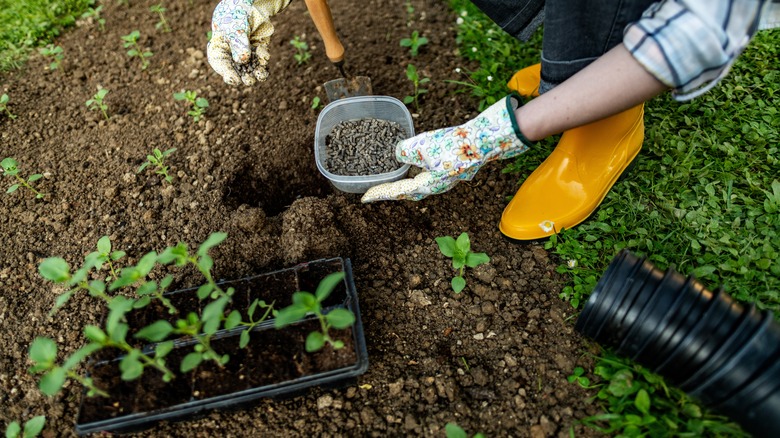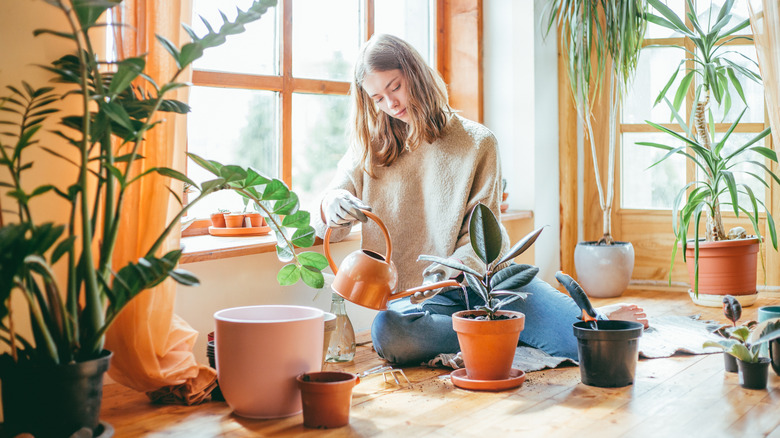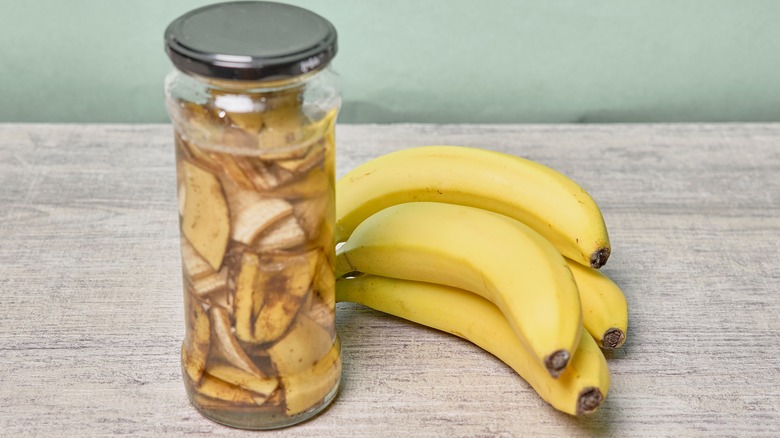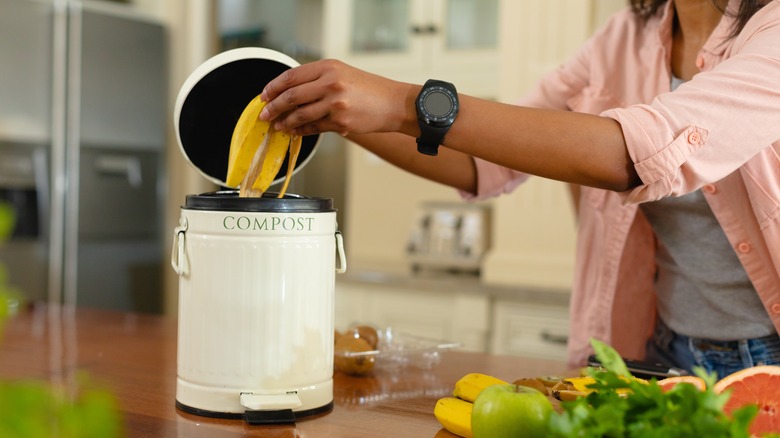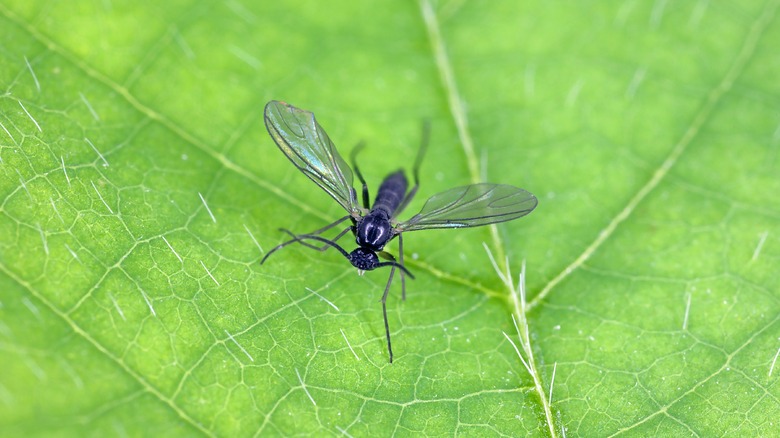Stop Throwing Away Banana Peels And Use Them In Your Garden
Bananas have plenty of vitamins and nutrients. So, it makes sense that banana peels also contain many of the same vitamins and nutrients that bananas have — such as calcium, magnesium, phosphorus, and potassium. One thing all these nutrients have in common is that they are not only great for humans but are also great for plants. This is why you will see many gardening blogs recommend taking your used banana peels and throwing them into your vegetable garden for them to eventually break down and add those essential nutrients back into the soil. However, despite this sounding like a great idea, this method has a few problems.
The first problem is that although banana peels are biodegradable, they break down quite slowly. It can take a banana peel anywhere from seven months to two years to fully break down. This means that if you add whole peels to your garden, you will have to be okay with looking at decomposing peels for quite a while. The second problem is that banana peels smell like bananas and if they are left sitting on top of your garden soil, they can draw pests to your yard including mice, roaches, flies, and ants.
So, instead, here are some better ways to use banana peels in your garden to add extra nutrients to your plants while keeping your garden neat, tidy, and pest-free.
Make banana peel fertilizer powder
One great way to help the microorganisms naturally present in your garden break down banana peels faster is to make the pieces as small as possible. You can do this by taking your banana peels and making them into a powder fertilizer. The benefit of this method is that you can either add your powder directly to the soil or mix it with water to use the same number of peels to fertilize more plants.
To make your powder, you will first need to dry the peels, which can be done by laying them in the sun for one to two days. You can also dry the peels in the oven by spreading them out on a cookie sheet and baking them at 140 degrees Fahrenheit with the door slightly open until all the peels are fully dry. Once they are dry, let the peels cool and then put them into a food processor or coffee grinder to make a fine powder. This powder can be used as a type of slow-releasing fertilizer that is particularly loved by orchids and ferns and can be added to the soil every few months.
Feed indoor plants with banana peel tea
While a fertilizer powder works great for outdoor vegetable gardens, it's not great for potted indoor plants that don't have worms or other microbes to break down the banana peel into usable nutrients. Luckily, one great way to use banana peels to add nutrients to potted plants is by making them into an infused liquid or tea.
There are a few ways of doing this, but the general idea is to gather a couple of used peels, put them in a jar or container, then fill that jar with water and let it sit in the sun for around 24 hours. When the banana peel tea is ready, it will be a dark brown color and you can strain it to remove any banana bits and then use it to water your plants. This method is great for houseplants or outdoor potted plants that just need a little nutrient boost.
As pointed out by Reader's Digest, this method is slightly controversial because, although many gardeners swear by banana peel water, there needs to be more scientific research on the topic to prove how well the method really works in extracting nutrients from banana peels. You may have more success in extracting potassium from your banana peels if you boil them in the water instead of just letting the mixture sit in the sun.
Make a fermented banana vinegar
While some plants (including most vegetables) do well in alkaline soil, other plants thrive in soil with acidic pHs such as hydrangeas, rhododendrons, blueberries, azaleas, daffodils, and magnolias. These plants enjoy a little dose of acid now and again, especially hydrangea flowers which even change color based on the acid level of the soil. So, next time, instead of adding diluted vinegar to your plants to lower the pH of the soil, you can try fermenting your own banana-infused vinegar to give your plants a tasty, nutrient-rich treat.
While it does take some time, fermenting vinegar for plants is quite easy. Simply start with a mason jar filled with your chopped leftover banana peels. Then, fill the jar with water until it fully covers the peels, and cover the jar with a cheesecloth. Next, let the jar sit in a warm place for around one week as it begins to ferment. After a week, go ahead and remove the banana peels and let the leftover liquid continue fermenting in the mason jar for another month. When the mixture smells like vinegar, it's done and is ready to be diluted and added to your plants.
Add your peels to the compost bin
While you probably already know that banana peels can be composted with the rest of your food scraps and plant matter, the reason composting is on this list is that, despite being the most traditional and well-known method, it is still probably the best way to quickly break down banana peels and make their nutrients bioavailable to the plants in your garden. While composting can sound like a daunting process, it is possible to start small by purchasing a bin that is specifically designed for backyard composting.
If you want to sit back and let beneficial organisms do all the work for you, you can try vermicomposting which uses red worms to break down food scraps like banana peels. The benefits of vermicomposting are that it produces usable nutrient-rich soil faster than traditional composting and can be done in a smaller container that can be easily moved and stored on your back porch or in your basement. Vermicomposting bins, if correctly maintained, also don't smell and are even suitable for small spaces, like apartments.
Make an insect trap
If you aren't determined to extract the nutrients from your leftover banana peels, then there are also a few other ways you can use them around the garden including as bait in a natural insect trap. This trap works especially well if you have fruit trees or other plants in your garden that are attracting flies and gnats to your yard. The trap is also safe for children, pets, and other curious but harmless critters who may try to get into it.
To make, simply pick a plastic container (a leftover container from takeout delivery will work just fine) and fill it with a mixture of chopped banana peels, apple cider vinegar, and a cup of cold water. Then, cover the top with plastic wrap secured with a rubber band and poke holes in it that are large enough for flies or gnats to fit through. Lastly, place the trap in your garden where the insects normally hang out, and you will start catching bugs right away. Simply throw it out and make a new one when the trap gets too full.
